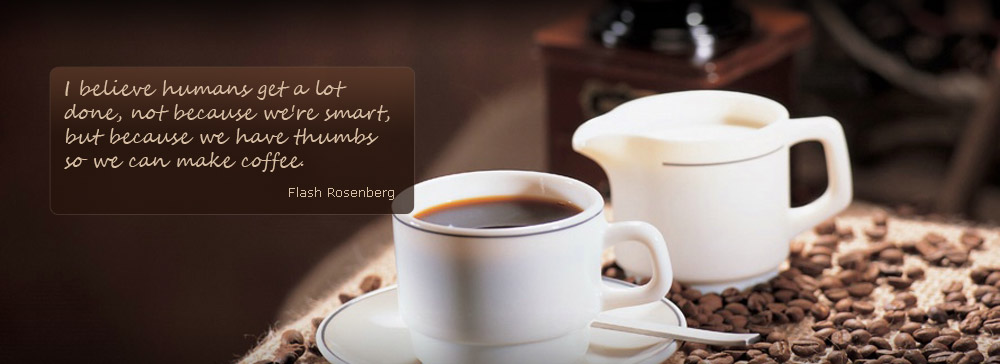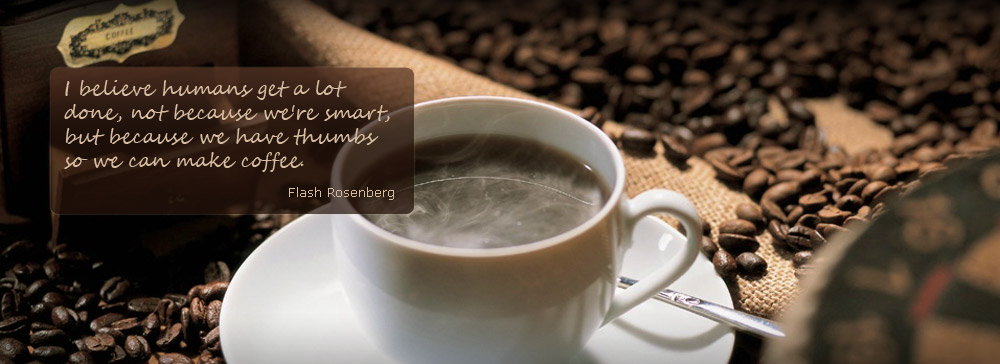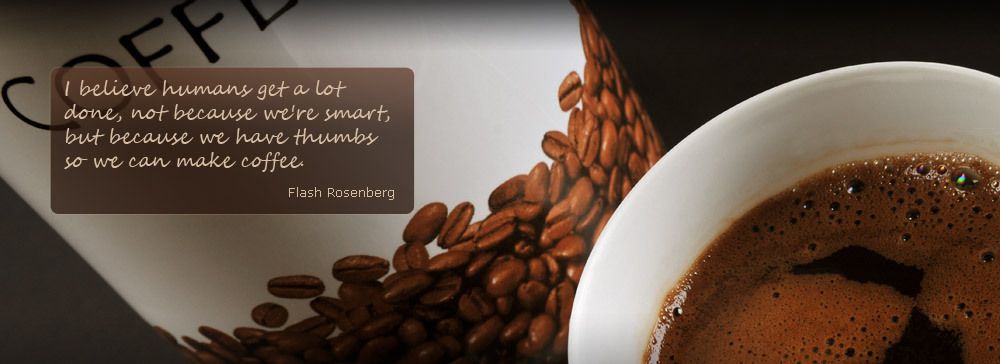| |
CURIOUS FACTS - coffee culture around the world






 |
Coffee around the world, is consumed in different ways, in differing styles, with differing strengths, but the tendencies for certain areas of the planet may surprise you. |
| |
Italy
Solo Espresso
A single shot of espresso
Doppio Espresso
Two shots of espresso
Espresso Macchiato
Espresso shots with a dollop of foam
Espresso Con Panna
Espresso shots topped with whipped cream
Latte
Espresso shots with steamed milk, topped with a layer of foam
Mocha
Espresso with chocolate, steamed milk, usually topped with whipped cream
Latte Macchiato
Steamed milk topped with a layer of foam and a ristretto shot of espresso
Cappuccino
Espresso with half steamed milk, half foam. "Dry" refers to more foam than the standard, and "wet" refers to more milk than the standard. "Bone dry" means espresso shots, then filled to the brim with foam. |
| |
SPAIN
Cafe cortado
This is the Spanish version of the Italian espresso with a small amount of warm milk to reduce the acidity. The ratio of milk is between 1:1 - 1:2, and the milk is added after the espresso. The steamed milk hasn't much foam, but many baristas make some micro foam to make latte art. It is popular in both Spain and Portugal, as well as throughout Latin America, where it is drunk in the afternoon. In Cuba, it is known as a cortadito, and in Catalan it's called a tallat. It's usually served in a special glass, often with a metal ring base and a metal wire handle. There are several variations, including cortado condensada (espresso with condensed milk) and leche y leche (with condensed milk and cream on top) |
| |
AUSTRIA
Wiener Melange
A Wiener Melange (German for "Viennese" and French for "Blend") is "properly" coffee with milk and is similar to a cappuccino but usually made with mild coffee (e.g. mocha), preferably caramelised. The Viennese coffee company Julius Meinl specifies a melange as having "equal parts steamed milk and foam", and serves theirs dusted with cocoa powder.
Fiaker
This is a specialty dedicated to Vienna's coachman - Fiaker. The traditional espresso or mocha is complemented with a sip of rum or cognac and is served with whipped cream decorated in a glass. |
| |
FRANCE
Cafe au lait
A cafe au lait is a French coffee drink. In Europe, "cafe au lait" stems from the same continental tradition as "caffe Latte" in Italy, "cafe con leche" in Spain, "kawa biala" ("white coffee") in Poland, "Milchkaffee" in Germany, "Grosser Brauner" in Austria,[1] "koffie verkeerd" in Netherlands, and "cafe com leite" in Portugal, simply "coffee with milk". In northern Europe, cafe au lait is the name most often used in coffee shops. It is a coffee beverage consisting strong or bold coffee (sometimes espresso) mixed with scalded milk in approximately a 1:1 ratio
Cafe brulot
Brulot in French means spicy or burned with sugar. The recipe for this famous blending of dark roasted Creole coffee with cognac or brandy and vermouth, spiced with cinnamon and orange peel is attributed to Dominique Youx, top lieutenant to the pirate, Jean Lafitte.
Cafe creme
Cafe creme is simply a cup of coffee rich with cream; the ultimate French indulgence (similar to the Italian cappiuccino). |
| |
TURKEY
Turkish coffee (also Arabic coffee, Armenian coffee, Greek coffee, and more) is a method of preparing coffee where finely powdered roast coffee beans are boiled in a pot (cezve), with sugar according to taste, before being served into a cup where the dregs settle. This method of serving coffee is common throughout the Middle East, North Africa, the Caucasus, and the Balkans.
While the word 'coffee' comes from Arabic, coffeehouse culture developed in the former Ottoman world, and this was the dominant style of preparation. |
| |
GREECE
Greek coffee
The traditional Greek mocha coffee originated in the Middle East and until the 1970s in Greece was widely known as “Turkish”. The pot used for making Greek coffee is called a briki.
There are three different ways of preparing mocha coffee: sketos (bitter), metrio (medium-sweet), and glikos (sweet). A varies ghlykos (strorng and sweet) or a ghlykis vrastos (sweet and boiled) can also be ordered. In case a double proportion is needed, then the order should be a ellinikos diplos (double).
Frappe
Frappe was born, according to the urban legend, back in 1957 in the International Trade Fair in Thessaloniki. It has been a sales representative at Nestle exhibit, Dimitris Vakondios, who made this important discovery. Reportedly there was no hot water available, so Vakondios grabbed a shaker meant for Nestles Nesquik chocolate drink, filled it instead with NESCAFE instant coffee and cold water, and shock it vigorously. Vakondios has stated that he finds it difficult to believe how a simple improvised experiment came to establish this most popular of Greek beverages.
This cold enjoyment of instant coffee represents the long Greek summer and its foam reminds us of the foam of the waves. Recipes vary according to different tastes - with milk or without milk, sugar or no sugar, very chilled with ice or just very cool with water. It is served in a tall glass with a straw. |
|
|












